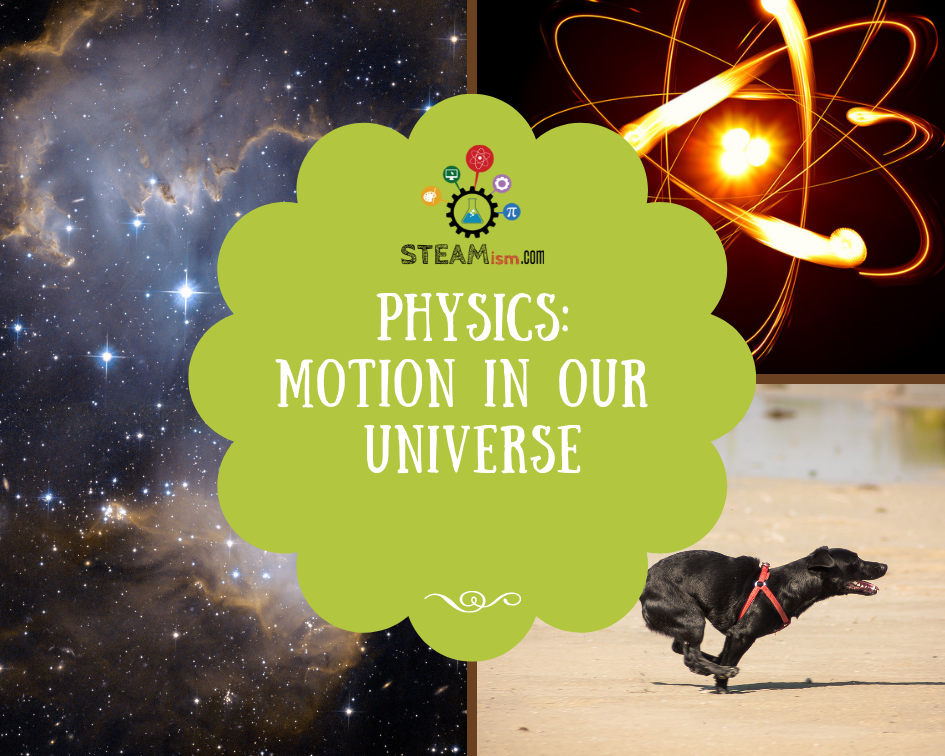One of the primary topics, and even foundation, that the study of physics is based on, is MOTION.
Motion – Everything in the universe moves.
Motion is defined as the change in position of an object in relation to its surroundings in a given interval of time.
- The Sun orbits around the center of the Milky Way Galaxy at an average speed of 828,000 km/hr.
- The Earth moves around the Sun at an average speed of 108,000 km/hr. Earth’s speed is not constant as the Earth orbits elliptical orbit.
- The Moon orbits Earth at a speed of 3,683 kilometers per hour.
- Most things on Earth are in constant motion.
- Electrons orbit around the nucleus in constant motion.
Laws of Motion
Remember Newton’s 3 Laws of Motion? They lay the foundation for explaining classical mechanics, the study (in the subjects of both physics and mathematics) of the motion of everyday objects and the forces that affect them.
Terms associated with motion
When we think of movement or motion in our daily life, we use many words like move,🏃♀️run,🚶♂️walk,✋ stop, go, speed up, fast, slow, the directions (N, E, W, S), left, right.
In physics, we use slightly different terms to describe motion like:
- distance
- displacement
- speed
- velocity
- acceleration
- inertia.
Latest posts by Divya Pochimcherla (see all)
- How To Write A Lab Report - April 8, 2023
- The States (Phases) of Matter - June 9, 2020
- What is Engineering? - June 2, 2020
